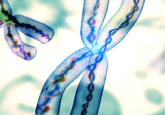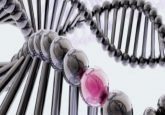Childhood leukemia research reveals disease subtypes and potential new treatment

A new study carried out by researchers from the University of California, San Francisco (CA, USA) and Oregon Health & Science University (OR, USA) has revealed that acute lymphoblastic leukemia (ALL) has two distinct subtypes and that approximately 13% of ALL patients could be treated effectively with targeted therapies currently used in adult lymphoma patients. The study was published recently online in Cancer Cell.
ALL usually presents in young children between 2 and 5 years of age and is characterized by unregulated lymphocytes proliferation. Current treatments rely on high doses of chemotherapy, treatment that is often curative but that can be associated with well-documented side effects.
The researchers have developed a laboratory test that determines which subtype of ALL each individual patient has, which they believe may assist in personalizing ALL therapy. The less common subtype may respond more favorably to targeted therapy and a new study is already recruiting patients for Phase I trials to determine the efficacy of these targeted therapies for ALL.
“We hope patients in this newly identified subset can be treated with these targeted drugs, which have worked very well in patients with lymphoma and which are powerfully effective in the mouse experiments we have conducted on ALL,” commented co-senior author Markus Müschen of University of California, San Francisco. “These drugs have essentially no side effects and relatively few effects on quality of life.”
The current research grew out of a previous study from 2013, which was researching new treatments for lymphoma. That study, published in The New England Journal of Medicine, demonstrated that several forms of lymphoma responded favourably to ibrutinib and idelalisib, two drugs that target the B-cell antigen receptor found on lymphocytes.
“Because B cells are also involved in ALL, we essentially recapitulated these studies, starting out with the basic science by studying genetic components of the B-cell antigen receptor in mice,” explained Müschen. “We were surprised to find that, depending on the initial cancer-causing mutation, B-cell antigen receptor signaling is sometimes present in ALL, which suggested that ALL might also respond to the drugs that had been used in lymphoma.
It was discovered that cells exhibiting B-cell antigen receptor signaling also express notably high levels of BCL-6. Using BCL-6 as a biomarker, the researchers utilized several methods to inhibit B-cell antigen receptor signaling. One of these methods utilized targeted compounds often employed in lymphoma treatment. It was demonstrated that this approach selectively killed ALL cells in vitro and these results were replicated in mouse studies.
To further investigate the potential of BCL-6 as a biomarker for targeted therapy, the research team studied four ongoing ALL clinical trials, involving a total of 830 individuals. Of these patients, 112 (13.5%) exhibited BCL-6 expression, which was visualized by staining of bone marrow slices. Additionally, no BCL-6 staining was observed in patients with disease that did not display B-cell antigen receptor signaling. These results suggest that BCL-6 may have sufficient sensitivity and specificity to select patients for targeted therapy.
“Children are given high doses of chemotherapy for ALL because they are considered more resilient than adults, but there are long-term consequences that may not be obvious in childhood,” stated Müschen. “Our idea is that by adding these new drugs we can reduce the amount of conventional chemotherapy or even replace it. In our experiments with mice, both combination therapy with low-dose chemotherapy and single-agent targeted therapy each worked very well. The new clinical trial using the BCL-6 biomarker should begin to bring us the answers.”
Source: University of California, San Francisco news release


